Liner Services
In the liner services database you can find all the regular connections of the Port of Hamburg in sea traffic as well as in feeder and short sea traffic.
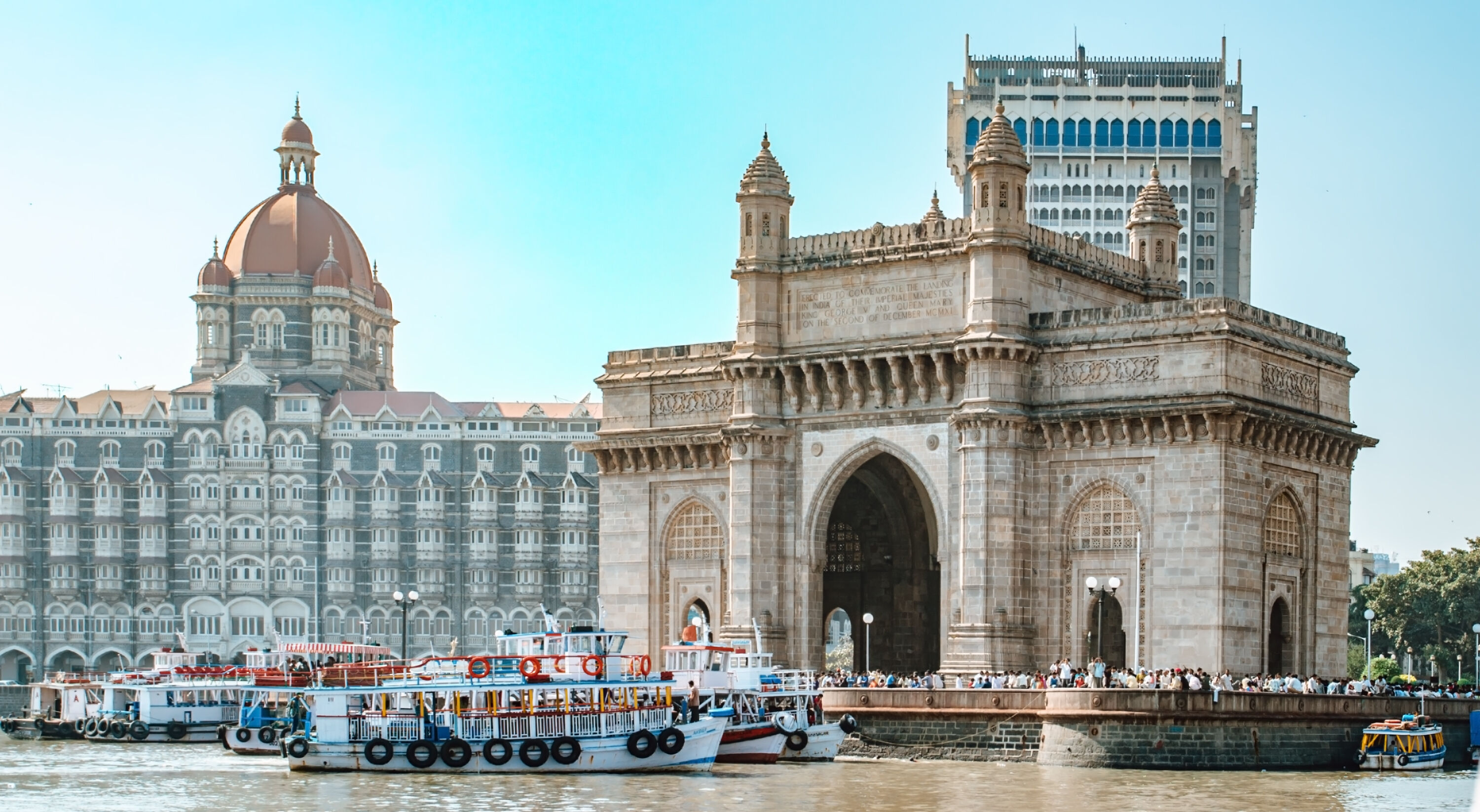
Home | All Specials | India
India is emerging as one of Asia's leading economic powers alongside China. It recently became the world's most populous country, and few economies are growing as fast as India's. With a GDP of around US$3.4 trillion, India is the world's fifth largest economy in 2022 - and its government aims to become the third largest by 2030. India is also becoming an increasingly important trading partner for Germany. According to foreign trade statistics, both exports to and imports from India have increased significantly since 2015. The Port of Hamburg plays a central role as a hub for the exchange of goods between the two nations.
"India and Hamburg have forged a robust trading partnership, driven by concerted efforts to diversify markets amid growing geopolitical uncertainties. The enduring relationship between the Port of Hamburg and India holds immense potential, poised for further growth through a strategic exchange of knowledge."

According to foreign trade statistics, bilateral trade between Germany and India amounted to a value of around €30 billion in 2022. This puts the subcontinent in 24th place among Germany's most important trading partners. It is even among the top ten non-European trading partners.
Between 2015 and 2022, German exports to India increased in value by more than half, from €9.7 to €14.9 billion. Imports grew even more significantly, almost doubling in the same period from €7.6 to 15.0 billion. Here, India is benefiting, for example, from the diversification strategies of many companies seeking new markets in Asia.
In maritime transport, volumes are usually measured in tonnes. In 2022, the transport of goods between Germany and India will grow to 4.5 million tonnes. The growth in 2021 and 2022 was mainly driven by imports (2022: +13.6 percent to 2.58 million tonnes). For the first time since 2008, the volume of imports will exceed that of exports (2022: +4.3 percent to 1.94 million tonnes).
The majority of German trade with India is seaborne. Around 80 percent of goods between the two countries are transported by sea. In terms of tons, chemical products, including pharmaceuticals, are the most imported goods from India. Germany imported around 350,000 tons in 2022. The import of metals has increased in particular. In 2022, almost 250,000 tons of metals were imported from India to Germany - almost 40% more than in 2019. Food and animal feed, machinery and textiles follow in the quantitative import ranking.
Similar to imports, chemical products were by far the most important export to India. In 2022, Germany exported almost 800,000 tons to India. In addition, Germany mainly exported wood, metals, machinery, paper and cardboard to the Asian country. The Port of Hamburg plays an important role in German-Indian trade. It has the necessary infrastructure and logistical expertise to handle and distribute goods efficiently. Almost three quarters of Germany's seaborne cargo throughput with India are handled via the Port of Hamburg.
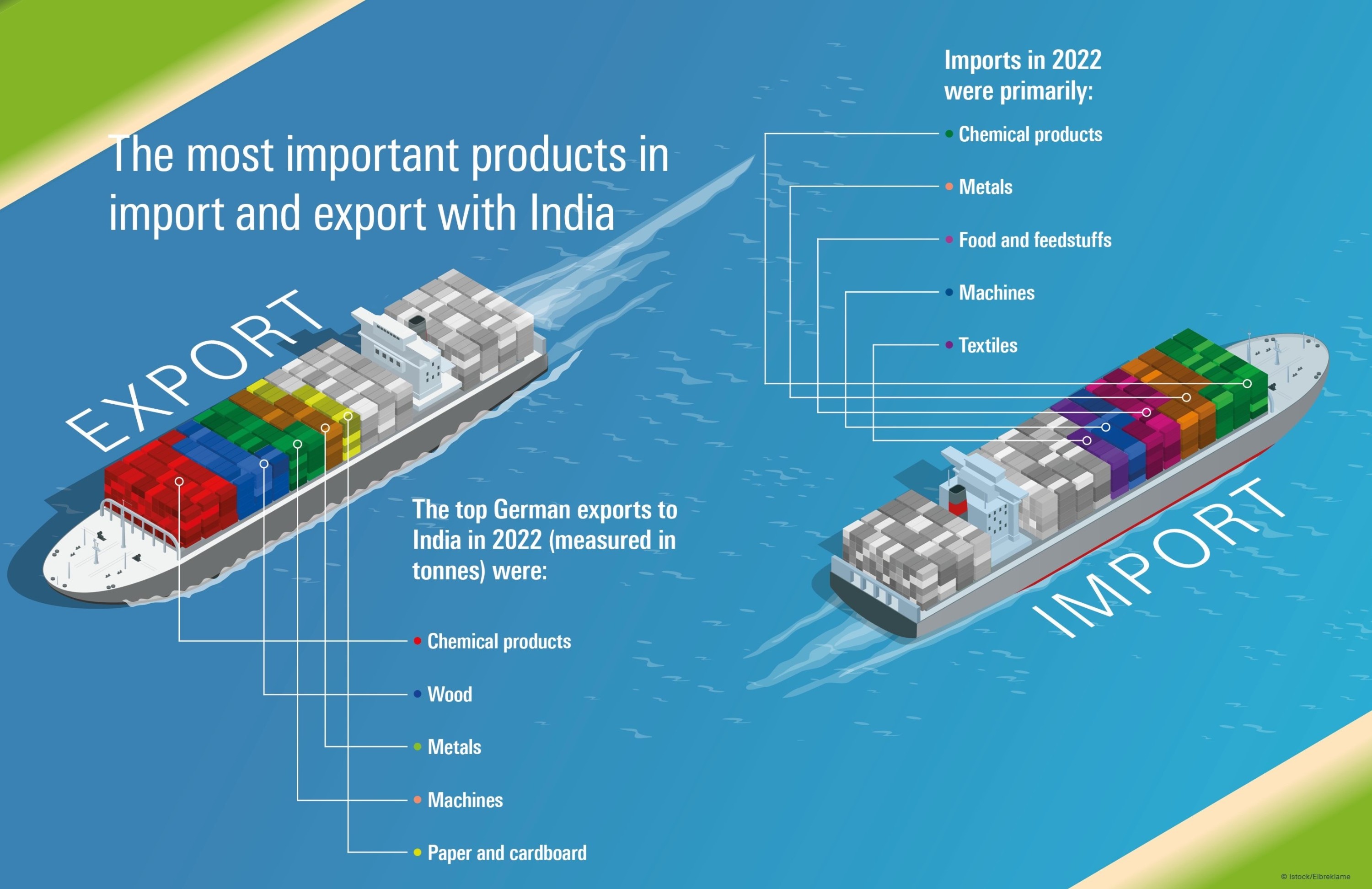
The Port of Hamburg plays a central role in trade between India and Germany. In 2022, a total of 182,000 standard containers (TEU) originating from or destined for India were handled in direct traffic in the Port of Hamburg. The handling volume of these containers was around 3.25 million tons (including the tare weights of the containers), of which 1.4 million tons were imports and 953,000 tons were exports. The subcontinent therefore ranked twelfth among the Port of Hamburg's most important trading partners.
The first half of 2023 has seen an accelerated growth in Hamburg's trade with India. Exports of seaborne goods grew by almost 37 percent to 604,000 tons transported, while imports were around 38.5 percent up on the same period last year at around 1.04 million tons. With 99,000 TEU handled, the Port of Hamburg achieved its best result in four years. India thus rose to eighth place among the Port of Hamburg's most important trading partners after the first half of 2023. It even ranks third among the Asian partner countries.
The Port of Hamburg is connected to India via ten regular liner services. These include four container liner services, two vehicle transport services and four general cargo services, three of which also accept heavy cargo and one of which also accepts rolling cargo. The container ships serving these routes trade have slot capacities between 4,300 and 15,000 TEU (standard containers). Multi-purpose freighters with carrying capacities of 12,000 to 30,000 tons are also used.
Via the liner services, the Elbe metropolis of Hamburg is connected to eleven important Indian ports, which are spread across the subcontinent. These are the ports of Chennai, Cochin, Ennore, Haldia, Hazira Kandla, Kolkata, Krishnapatam, Mundra, Mumbai, Nhava Sheva and Visakhapatnam. Depending on the port, traffic and rotation, transit times usually range from two weeks with the west coast to three weeks with the east coast.
All liner services of the Port of Hamburg in intercontinental sea traffic and in European feeder and short-sea traffic with around 950 destinations in 178 countries as well as contacts to around 100 agencies and liner shipping companies can be called up online in the Linerservices database.
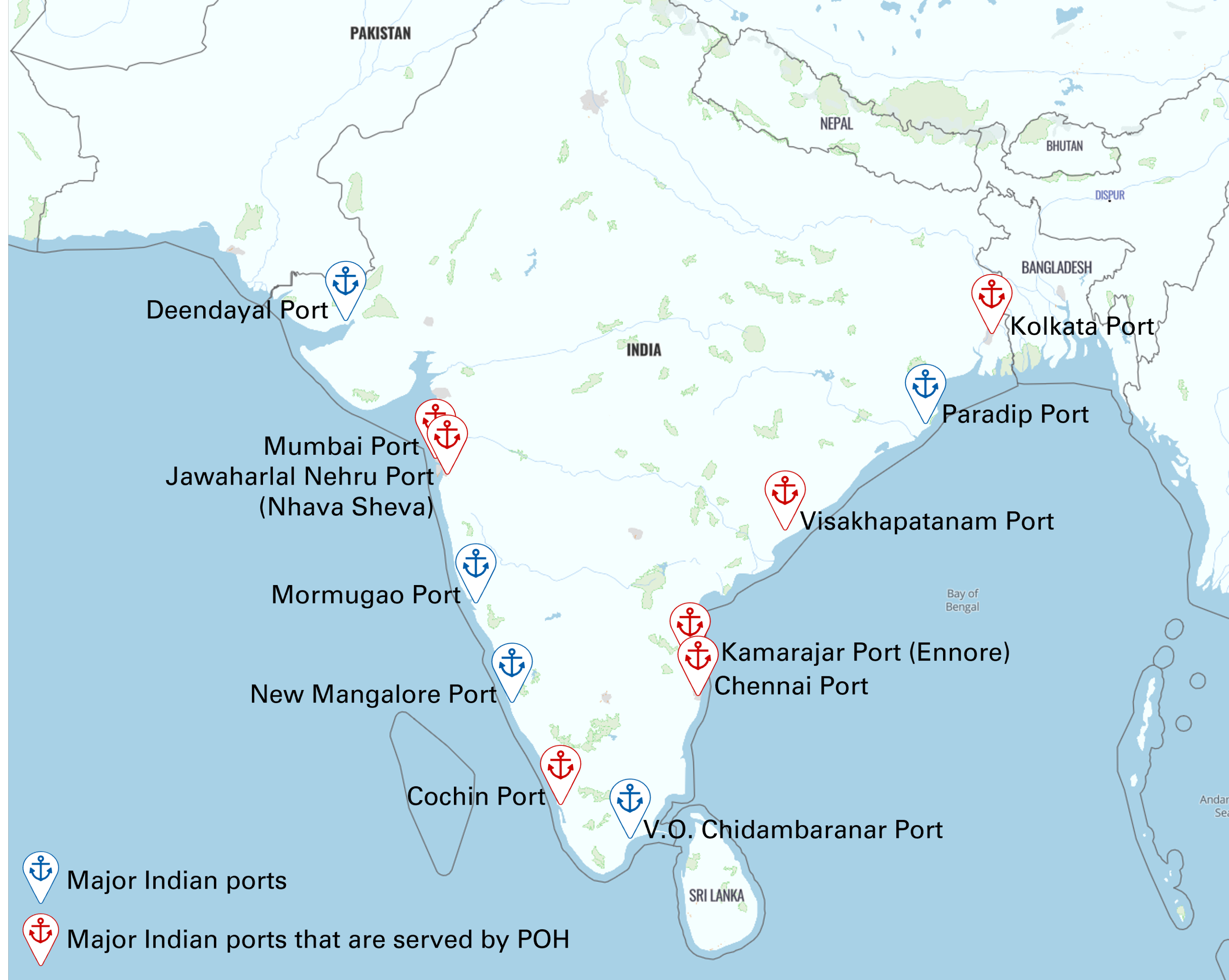
The Port of Hamburg is a key center for transhipment traffic and hinterland transport in Northern Europe. Around 26 percent of containers with India as their destination or origin passed through the Port of Hamburg via transhipment connections in 2022 or were shipped on to India from their points of origin via Hamburg. Most containers transhipped via Hamburg to India originate from Sweden, Poland or Denmark. In the opposite direction, Poland, Sweden and Denmark were the most frequent destinations.
Transportation solutions for the Indian subcontinent often use hub ports such as Colombo. Eight liner services connect the Sri Lankan capital with the Port of Hamburg, including seven container services and one multi-purpose service. Megamax vessels with a capacity of up to 24,000 standard containers (TEU) are also used. Last year, 128,000 TEUs were transported to India via Sri Lanka, almost 9 per cent more than the previous year. Including these volumes, the total container throughput with the Indian market was around 310,000 TEU.
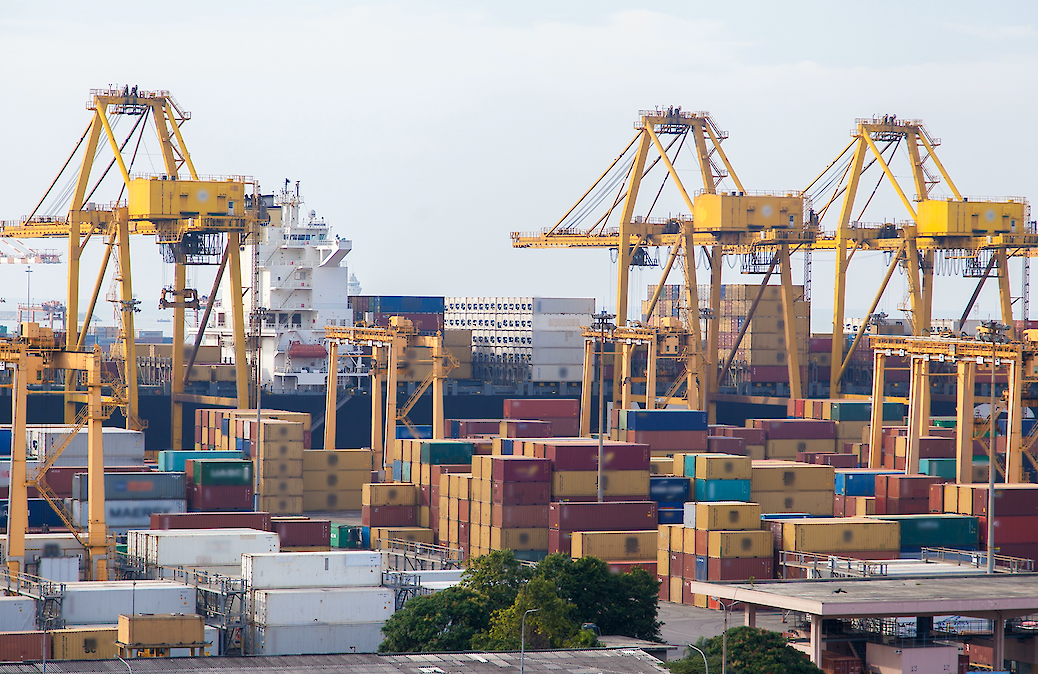
Supply chain diversification is becoming increasingly important to minimise default risk in times of geopolitical tensions, trade wars and global pandemics. This is accompanied by a geographical rebalancing in Asia, known as the "China + 1" strategy. Many companies are tending to invest in countries other than China.
India is benefiting from this trend due to its political stability, skilled workforce and competitive production costs. The record FDI inflow of USD 83.57 billion in 2021-22 underlines India's attractiveness as a promising complement to China. According to the Hamburg Chamber of Commerce, 700 Hamburg-based companies are already active in India, including 125 with their own representative offices or branches. For the past two years, the AHK India has observed a growing interest among companies in India as a new sourcing market.
There are many examples of investment in India: Apple tripled its manufacturing capacity in early 2023, producing iPhones worth more than $7 billion in India. Meanwhile, Cisco and Amazon are planning to expand their manufacturing capacity. Global sportswear companies such as Adidas, Nike, Puma and Reebok, as well as shipping company Hapag-Lloyd, are also strengthening their presence in India. In January, Hapag-Lloyd acquired a stake in J M Baxi Ports & Logistics (JMBPL), one of India's leading private terminal and inland transport service providers.
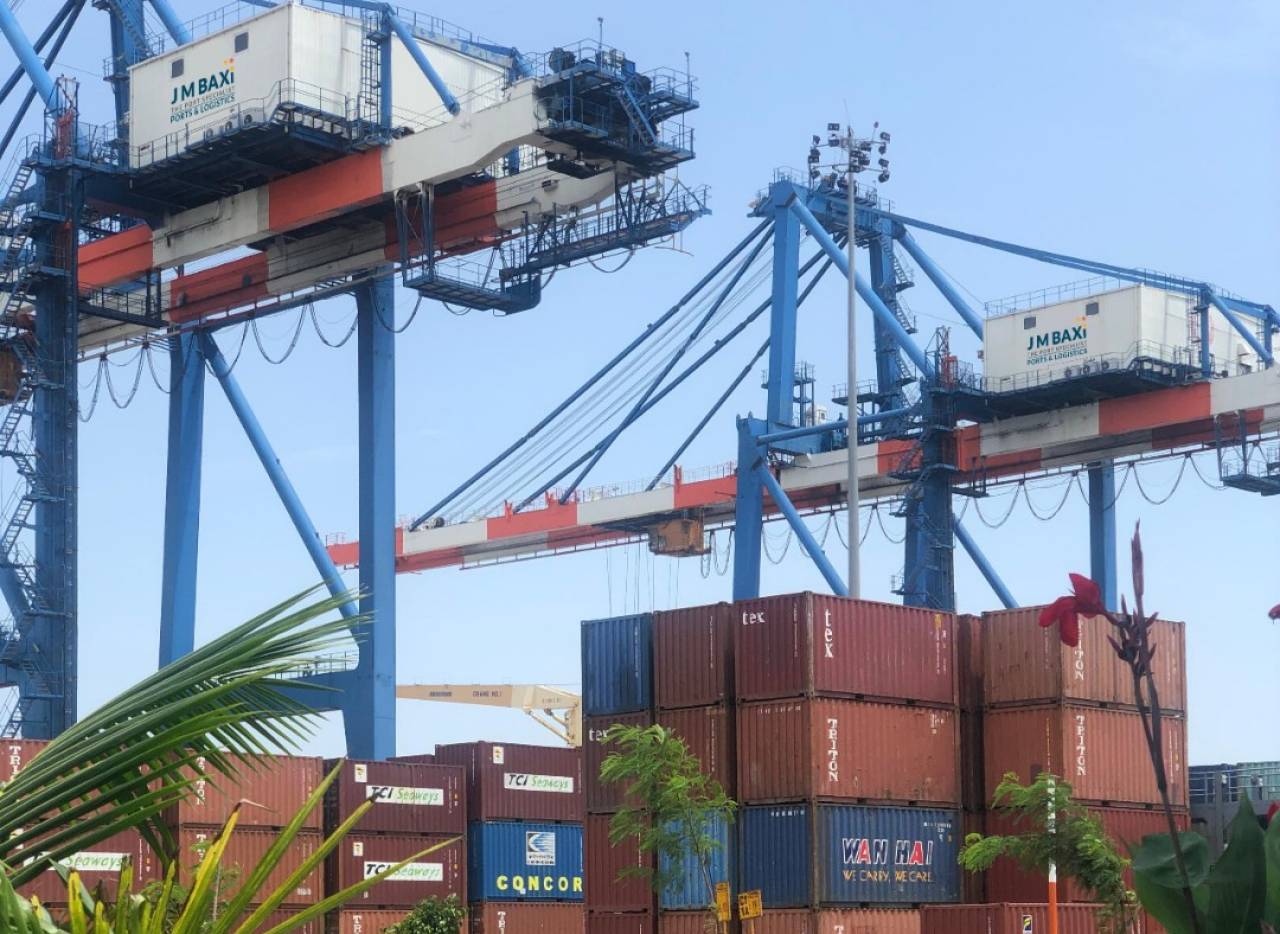
The Indian government aims to move the country from the fifth to the third largest economy in the world by 2030. To achieve this, the government is focusing on promoting industry, technology and innovation, in particular by investing in innovation hubs such as the 'T-Hub' in Hyderabad, which is expected to house over 1,000 start-ups.
In February 2023, the Indian government also announced that it would significantly increase its spending on infrastructure development. About 3.3 percent of GDP (about $122 billion) has been earmarked. The focus will be on 100 critical transport infrastructure projects in the ports, coal, steel, fertiliser and grain sectors. In addition, investment spending will focus on key areas such as roads, power plants, telecommunications networks, affordable housing and railways. Railways alone will receive USD 2.4 billion, the highest amount ever and nine times more than in 2014.
Together with the EU, the US and partners, a historic rail and shipping project was announced at the G20 Summit in September 2023. It aims to create the most direct link between India, the Persian Gulf and Europe, accelerating the transportation of goods between India and Europe by 40 percent.
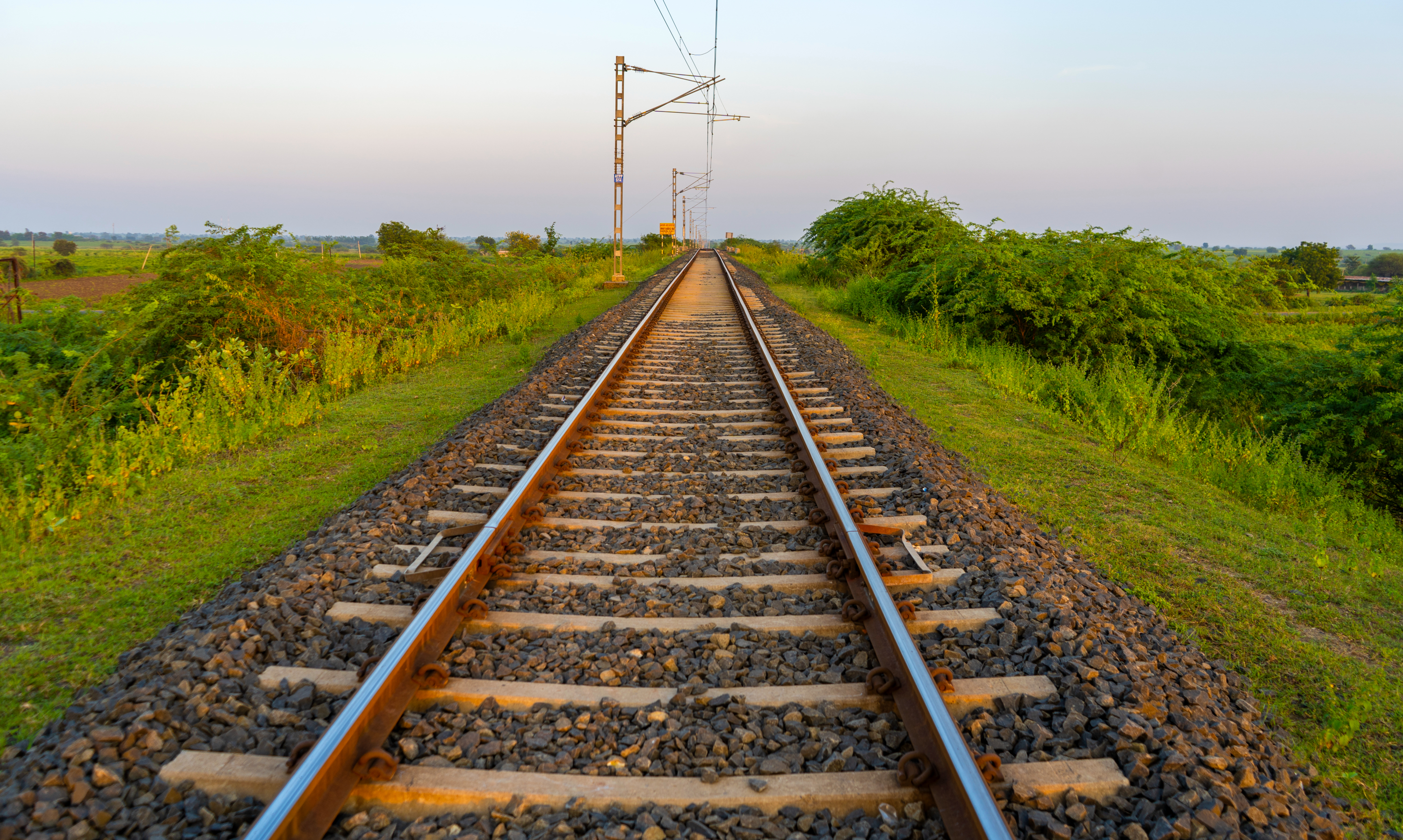
India's maritime industry is an integral part of the Indian economy. To coordinate the growth of the maritime sector, the Indian Ministry of Ports, Shipping and Waterways has launched the Maritime India Vision 2030 (MIV 2030).
The objective of MIV 2030 is to place India at the forefront of the global maritime sector. With a total investment of around 33-39 billion euros in ports, shipping and inland waterways, the initiative is expected to generate annual revenues of over 2.24 billion euros and create over 2 million jobs.
MIV 2030 includes more than 150 initiatives, including the development of world-class ports. For example, the government is planning an International Mega Container Transhipment Port (ICTP) at Galathea Bay, capable of handling feeder vessels up to large intercontinental freighters. The future ports of Vizhinjam and Vadhavan will also be able to accommodate ultra-large containerships. In this way, India aims to improve its container and cargo handling and become the world's factory.
Cooperation between Germany and India has enormous potential. To support the development and expansion of economic relations between the two countries, the Hamburg Representative Office Mumbai (HRM) was opened in 2011. It is the joint representation of the Hamburg Senate Chancellery, the Chamber of Commerce, Hamburg Invest, Hamburg Messe and Congress and Port of Hamburg Marketing in India.
With its office in Mumbai, HRM is not only located in one of the world's largest cities and the economic centre of India, but also in the immediate vicinity of the country's most important port, the Jawaharlal Nehru Port.
The expertise of the Hamburg Representative Office in Mumbai lies in the fields of trade, logistics, politics, culture and education. In addition, it maintains good contacts with economic, cultural and academic institutions, not least those from the transport sector and the market economy. As a result, HRM is available to German and Indian companies as a competent point of contact for matters relating to the other market.